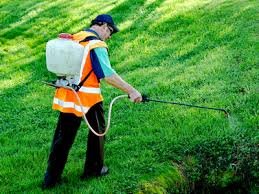Achieving a beautiful, lush lawn can be a fulfilling goal, but it often requires consistent care and attention. One of the biggest challenges in lawn maintenance is dealing with unwanted weeds. These invaders not only mar the appearance of your lawn but can also harm the health of your grass. Fortunately, with the right approach, you can keep weeds at bay and create a thriving, vibrant lawn.
Understanding the Problem with Weeds
Weeds are opportunistic plants that take advantage of weak spots in your lawn. They thrive where grass struggles, often due to issues like poor soil health, improper watering, or neglect. These plants compete with grass for sunlight, nutrients, and water, making it essential to address the root causes of their growth.
Building a Strong Foundation with Healthy Soil
Healthy grass begins with healthy soil. If your lawn looks thin or patchy, it could be a sign that your soil is lacking in nutrients or has an imbalanced pH. To start, perform a soil test. These tests will reveal important details about your soil’s condition, such as nutrient levels and acidity. You can find soil testing kits at garden centers or send samples to a local agricultural extension office for a more detailed analysis.
If the soil is too acidic, adding lime can help balance it. Conversely, if the soil is too alkaline, sulfur can bring it back to a healthy level. Incorporating organic matter, such as compost, can also improve soil structure and boost nutrient content, creating a better environment for grass to grow.
The Importance of Proper Watering
Watering plays a crucial role in lawn health. Overwatering can lead to shallow root growth, leaving your grass weak and vulnerable. Underwatering, on the other hand, can stress your grass and create opportunities for weeds to spread.
To strike the right balance, water your lawn deeply but infrequently. Aim for about one inch of water per week, including rainfall. This encourages grass roots to grow deeper into the soil, making the lawn more resilient and less likely to be overtaken by weeds.
Smart Mowing Practices
Many homeowners unintentionally harm their lawns by mowing too short. Cutting the grass too low weakens it, making it easier for weeds to take hold. Instead, set your mower blade to a higher setting, leaving the grass at least 2.5 to 3 inches tall. This taller height shades the soil, reduces evaporation, and helps prevent weed seeds from sprouting.
Additionally, avoid cutting more than one-third of the grass blade at a time. Frequent, small trims are better for your lawn than infrequent, aggressive mowing sessions.
Aeration: A Boost for Your Lawn
Over time, soil can become compacted, especially in areas with heavy foot traffic. Compacted soil restricts the flow of air, water, and nutrients to grass roots, weakening your lawn and inviting weeds.
Aerating your lawn helps alleviate this problem. By creating small holes in the soil, aeration allows nutrients and water to reach the grass roots more effectively. This process also encourages root growth and makes your lawn more robust and resistant to weeds.
Tackling Weeds Head-On
When weeds appear, taking swift action is key to preventing them from spreading. For small infestations, hand-pulling is a simple and effective method. Ensure you remove the entire root, as many weeds can regrow if even a small portion is left behind. Tools like weed pullers or forks can make this task easier, particularly for deep-rooted weeds.
For larger infestations, targeted herbicides may be necessary. Choose products designed specifically for your lawn type and follow the instructions carefully to avoid harming your grass. Alternatively, natural remedies such as a mixture of vinegar, salt, and dish soap can be used in non-grassy areas like driveways or sidewalks to kill weeds without chemicals.
Preventing Weeds with Thick Grass
The best defense against weeds is a dense, healthy lawn. Thick grass leaves little room for weeds to grow and competes effectively for resources. Overseeding is a great way to improve lawn density. Choose grass varieties suited to your region and spread the seeds evenly across your lawn, paying extra attention to bare or thin areas.
The Role of Mulching
Mulching is another effective way to prevent weeds. By spreading organic mulch around trees, flower beds, and garden areas, you block sunlight from reaching weed seeds, preventing them from germinating. Mulch also improves soil health and retains moisture, benefiting your plants.
Seasonal Maintenance
Lawn care isn’t just a spring or summer activity. Year-round maintenance is essential to keep your grass strong and weeds under control. In the fall, rake up leaves to prevent them from smothering your lawn. During winter, avoid piling snow on the grass, as it can damage the turf and create ideal conditions for weeds to grow in spring.
The Power of Grass Weed Control
Despite your best efforts, weeds may still find a way into your lawn. This is where grass weed control strategies come into play. Using the right tools and techniques, you can eliminate weeds effectively without harming your grass. Whether you choose manual methods, herbicides, or a combination of both, staying proactive will help you maintain a beautiful and healthy lawn.
Patience and Consistency
Improving your lawn takes time and effort, but the results are worth it. Be patient and consistent with your care routine, and celebrate small victories along the way. Each weed-free patch and new growth of grass is a sign that your hard work is paying off.
Conclusion
A healthy, weed-free lawn enhances the beauty of your home and provides a welcoming outdoor space. By focusing on soil health, watering, mowing, aeration, and proper weed management, you can achieve a thriving yard that stays resilient over time. Stick to these strategies, and you’ll enjoy the benefits of a vibrant, lush lawn for years to come.
